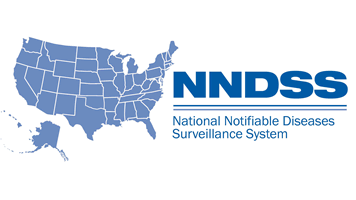Key points
- CDC tracks psittacosis cases using a national surveillance system.
- Psittacosis is an uncommon disease in the United States.
- Outbreaks of psittacosis are known to occur.
- Learn about trends in psittacosis cases.

Data system

National Notifiable Diseases Surveillance System
Psittacosis is a reportable condition in most states.
CDC collects national information about psittacosis cases through the National Notifiable Diseases Surveillance System (NNDSS). CDC publishes updated NNDSS data each week.
How the data are interpreted
Disease trends
Between 1988 and 2010, the number of reported psittacosis cases decreased. This decline may be the result of improved diagnostic tests that distinguish Chlamydia psittaci from more common C. pneumoniae infections. Since 2010, the number of reported cases has remained low.
The number of cases can vary widely from year to year because of periodic outbreaks. For example, poultry processing plants have reported psittacosis outbreaks. In 2018, a multistate psittacosis outbreak among poultry plant workers had 13 laboratory confirmed cases.
Data reporting
Since 2010, CDC has typically received reports of fewer than 10 cases in the United States each year. However, experts believe the disease is potentially underdiagnosed and therefore underreported.
Data definitions
The Council of State and Territorial Epidemiologists (CSTE) released the most recent case definition for psittacosis in 2010.
